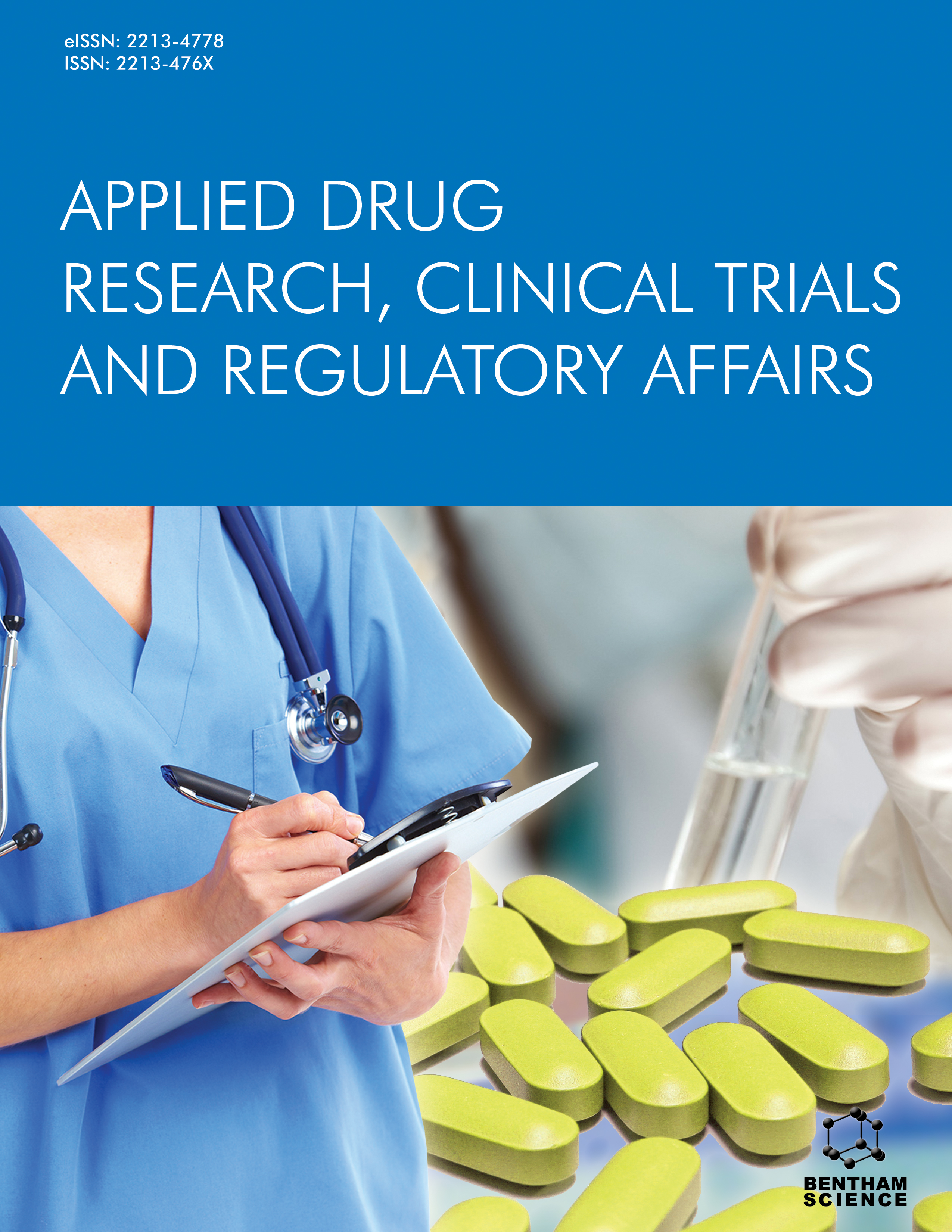- Home
- A-Z Publications
- Applied Drug Research, Clinical Trials and Regulatory Affairs
- Previous Issues
- Volume 8, Issue 1, 2021
Applied Drug Research, Clinical Trials and Regulatory Affairs - Volume 8, Issue 1, 2021
Volume 8, Issue 1, 2021
-
-
A Review of In vitro Diagnostic Kits and Their Regulation in the Indian Market
More LessAuthors: Kokila Chadha, Kritika Goswami, Rohit Bhatia, Pawankumar Jaggi and Arti R. ThakkarThe present review lays emphasis on the history, regulations, and processes involved in the approval of In vitro Diagnostic (IVD) kits in the Indian Market. Diagnostic system or apparatus used for diagnosis are called diagnostic kits. Some important types of kits, based on their mechanism of actions, are (i) Immunoassay diagnostic kits; (ii) Polymerase chain reaction diagnostic kits; (iii) Displacement polynucleotide assay emplo Read More
-
-
-
A Comparative Study of Pharmaceutical Incentives to Patents in India, USA and Europe
More LessAuthors: Renu Kadian and Arun NandaBackground: Protection of Intellectual Property Rights is a clear incentive to innovations; yet, several countries have provided further incentives to patents in pharmaceuticals because the full patent term of 20 years is largely exhausted, before marketing authorization. Objective: The purpose of this article is to describe the various incentives to patents in the form of financial support, data exclusivity and most importantly, extend Read More
-
-
-
Indian Pharmaceutical Industries Current Status and Togetherness to Overcome Speed Breakers in Term of Quality Issues to make India as a Global Pharma Destination
More LessAuthors: Vikas Rathee, Kapil Pihwal, Neelam Pawar, Sheikh Aamir, Mohammad S. Alam and Kavita BahmaniRegulatory is the heart of the pharmaceutical industries which acts as an interface between the industries and government authorities for the growth and development of the pharmaceutical industry of any country. In 2017, India was a pharmaceutical country valued at USD(United States Dollar)13 billion and accounting for 20 percent of worldwide exports, making the country the main supplier of generic drugs worldwide. Read More
-
-
-
Regulatory Requirements and Comparison of Approval of New and Generic Drugs in the United States of America and Japan: Implication for Future Strategies
More LessAuthors: Paramjeet Malik, Neelam Pawar and Kavita BahmaniSafety, efficacy and quality of a therapeutic product are the major concerns for the pharmaceutical companies. FDA and PMDA are the main regulatory authorities in the USA Japan respectively, that ensure the maintenance of these required parameters by forming standard guidelines and process for drug approval. These regulatory authorities review a pharmaceutical drug product from its discovery phase to the mark Read More
-
-
-
Postmarketing Surveillance of In-vitro Diagnostic System in the European Union
More LessAdvances in medical device technology and regulatory authorization adapt to changing requirements and market conditions. The assessment of safety and performance in the real-world scenario will help us understand clinical benefits and help in the evolution of the medical device and in-vitro diagnostic devices. The paradigm shift in the evaluation of medical devices and in vitro diagnostic devices will ensure that the devic Read More
-
-
-
An Overview of FDA Regulatory Requirements for Vascular Devices
More LessAuthors: Monika Targhotra, Rohan Aggarwal and Meenakshi K. ChauhanBackground: Like the latest medications, the Food and Drug Administration (FDA) endorsement procedure is expected to give assurance that, when it arrives at the commercial center, a clinical device is efficacious and safe in its planned use. Objective: The objective of the particular review is to give an outline of the FDAs’ survey method for clinical vascular devices. This audit principally focuses on the high-risk based or type-III cl Read More
-
-
-
Skirmishing Disconcerting Covid-19 by Drug Reassigning
More LessAuthors: Vikrant Nikam, Shubham Mangulkar and Jyoti KhapareBackground: COVID-19 is a most life threatening condition, therefore it is declared a pandemic by WHO as it has affected the whole world. Even though there are many advanced drug discoveries, viral afflictions are a broad area for researchers. Unfortunately, to date, no drug can treat this lethal infection. COVID -19 has raised the death rate crucially; therefore, it needs the reassigning of drugs for the control of affliction. In Read More
-
-
-
Lessons Learned from the COVID-19 Pandemic
More LessAuthors: Samra Abouchacra, Mohamad Yaman and Satish Chandrasekhar NairBackground: The COVID19 pandemic has devastated the entire globe with an astounding death toll and various forms of human suffering worldwide. In its wake, it has uncovered serious flaws and shortcomings in healthcare systems and beyond. Objective: The objective of this perspective is to highlight the lessons learned from the catastrophic pandemic and propose recommendations for optimal future prepar Read More
-
Volumes & issues
Most Read This Month
Article
content/journals/adctra
Journal
10
5
false
en


